The History of Linen Service: From Ancient Practices to Modern Convenience
Linen service, an integral part of the hospitality, healthcare, and service industries, has a rich history that reflects the evolution of human needs, technology, and commerce. From its origins in ancient civilizations to the sophisticated, large-scale operations of today, linen service has continuously adapted to meet the demands of cleanliness, convenience, and sustainability.
Early Beginnings: Linen in Ancient Civilizations
The use of linen dates back thousands of years to ancient Egypt, where it was highly prized for its durability and smooth texture. Linen was derived from the fibers of the flax plant, a resource-intensive material that required meticulous processing. Egyptians used linen for garments, burial shrouds, and household items, symbolizing purity and wealth.
During the Roman Empire, linen became a standard material for clothing and household textiles. Public baths, a cornerstone of Roman culture, often included facilities where visitors could rent linen towels or garments—a precursor to the modern concept of linen service.
The Birth of Commercial Linen Services
The Industrial Revolution in the 18th and 19th centuries marked a turning point in linen production and service. With advances in textile manufacturing and the advent of industrial washing machines, commercial linen services began to emerge. The service catered primarily to hotels, restaurants, and hospitals, where cleanliness and uniformity were paramount.
Key Developments During This Era:
- Mechanized Laundry: The invention of large-scale washing equipment allowed businesses to clean bulk linen efficiently.
- Railroads and Urbanization: As cities grew and transportation networks expanded, linen services could serve broader geographic areas.
- Hygiene Awareness: The rise of modern medicine and public health initiatives increased the demand for sanitized linens in hospitals and public spaces.
The Expansion of Linen Service in the 20th Century
By the early 20th century, linen service had become an established industry. Specialized companies provided clean, pressed linens on a rental basis, reducing the burden on businesses to purchase and maintain their own inventory.
Innovations and Milestones:
- Uniform Supply: Linen services began offering uniforms in addition to towels, tablecloths, and bedding, allowing businesses to project a professional image.
- Chemical Advancements: The introduction of synthetic detergents and chlorine bleach improved cleaning processes, ensuring linens met rising sanitation standards.
- Standardization: The industry adopted standard sizes and qualities of linens, making it easier for businesses to order and maintain consistent aesthetics.
The rise of hotels, motels, and resorts during the mid-20th century further propelled the growth of linen service. Businesses in the hospitality sector relied heavily on these services to meet the expectations of travelers for clean, crisp linens.
Linen Service in Healthcare
Hospitals and healthcare facilities became major customers of linen services, driven by the need for sterilized linens. From surgical drapes to patient bedding, linen service companies adapted their offerings to meet stringent health and safety requirements.
Advances in autoclaving (a high-pressure steam sterilization method) and infection control protocols made healthcare linen service one of the most specialized sectors within the industry. The importance of this service became particularly evident during pandemics and health crises, where hygiene standards were critical.
Modern Linen Service: Automation and Sustainability
Today, linen service is a sophisticated, technology-driven industry. Companies operate on large scales, using automated sorting, washing, and drying systems to handle vast quantities of textiles. Advanced logistics and software ensure efficient delivery and inventory management.
Trends in Modern Linen Service:
- Sustainability: Linen service providers are increasingly focusing on eco-friendly practices, such as water recycling, energy-efficient equipment, and biodegradable detergents.
- Customization: Modern services offer tailored solutions, including branding on linens, unique sizes, and specialty fabrics.
- Technology Integration: RFID tags on linens allow companies to track inventory, reduce loss, and optimize usage.
Linen Service and the Circular Economy
Linen service plays a crucial role in promoting a circular economy, where resources are reused rather than discarded. By renting linens instead of purchasing disposable ones, businesses reduce waste and conserve resources. Many providers have adopted initiatives to extend the lifespan of linens and recycle them into products like cleaning rags or insulation when they can no longer serve their primary purpose.
Conclusion: A Timeless Service Adapting to Modern Needs
From its origins in ancient civilizations to its critical role in today’s service industries, linen service has continuously evolved to meet the changing demands of society. With its focus on hygiene, convenience, and sustainability, linen service Toronto remains an indispensable part of industries ranging from hospitality to healthcare.
As technology advances and sustainability becomes even more central to global priorities, linen service will continue to innovate, ensuring it remains as relevant in the future as it has been throughout history.


